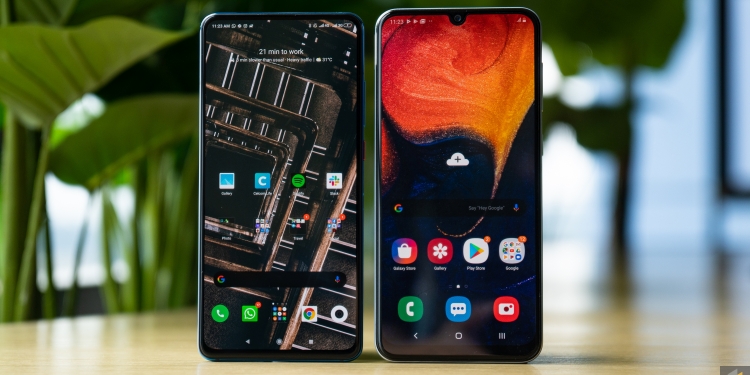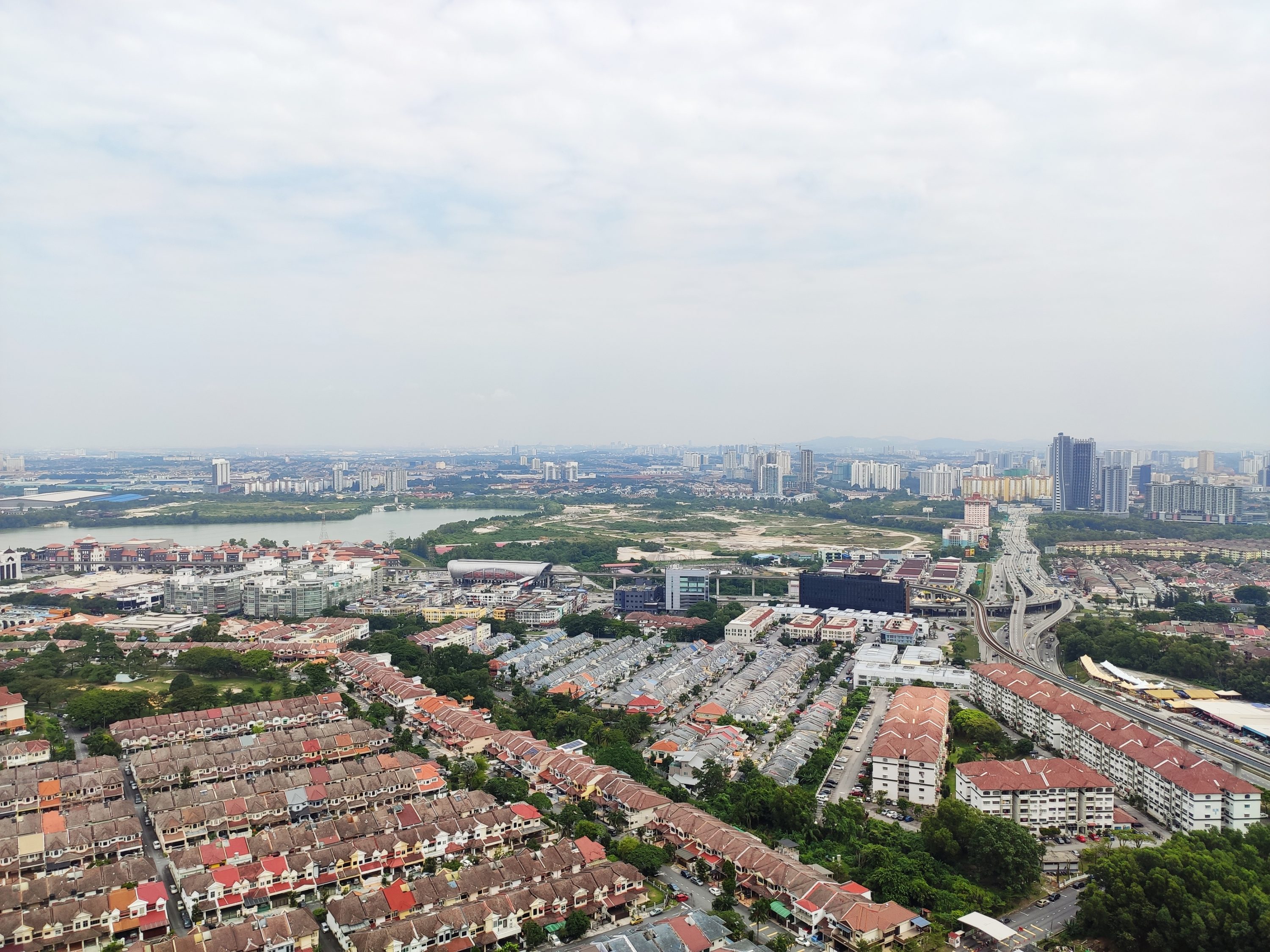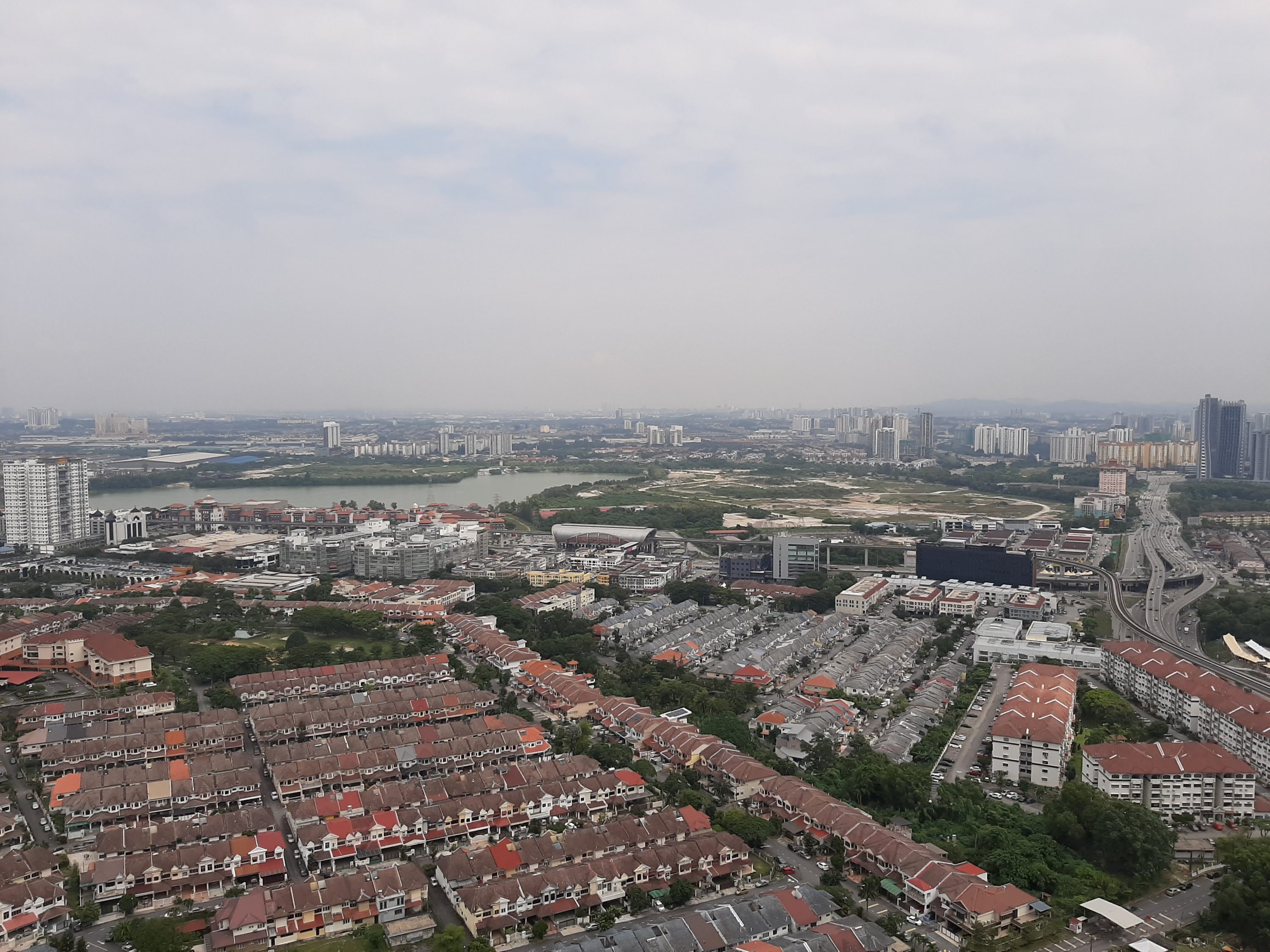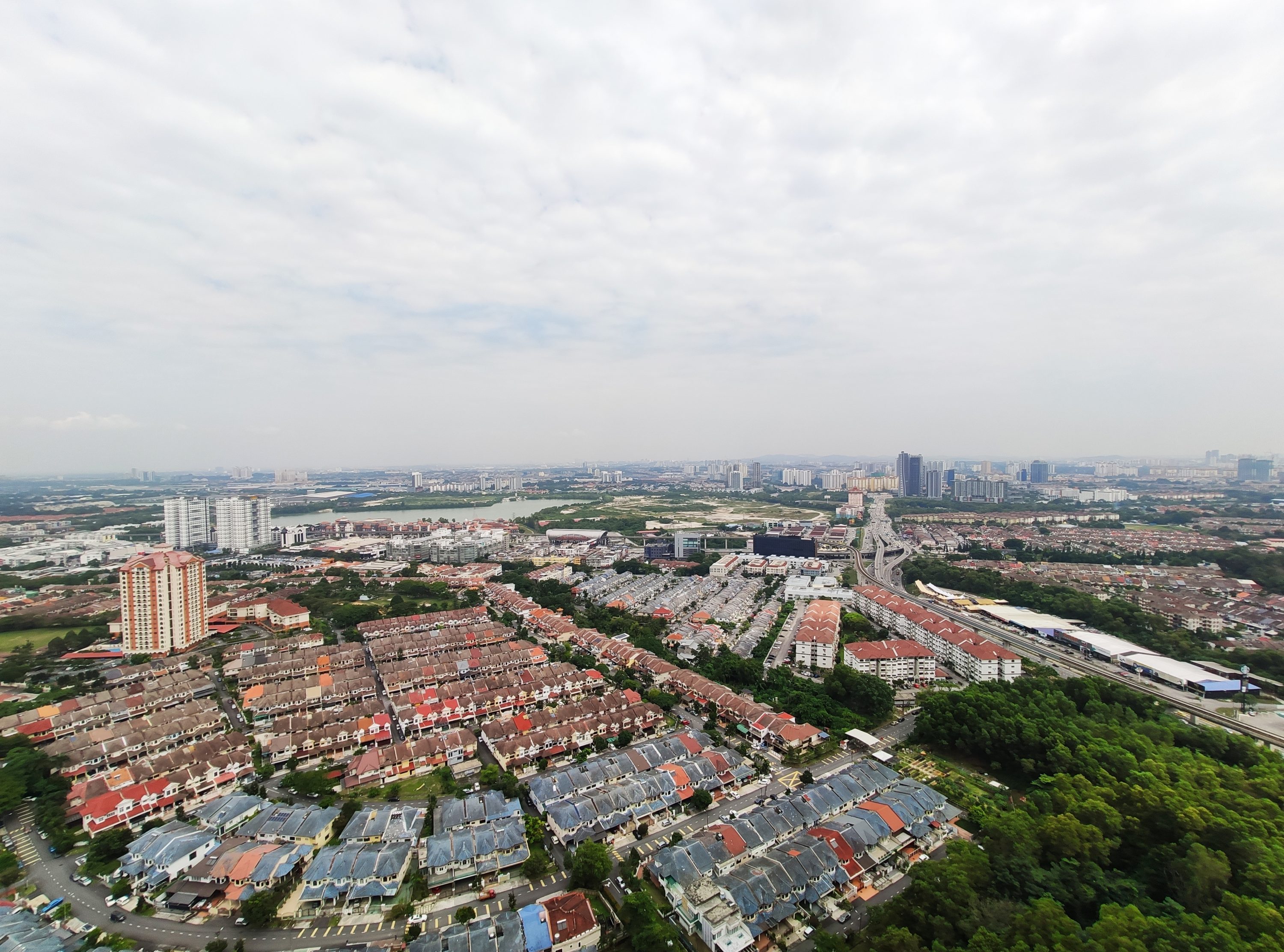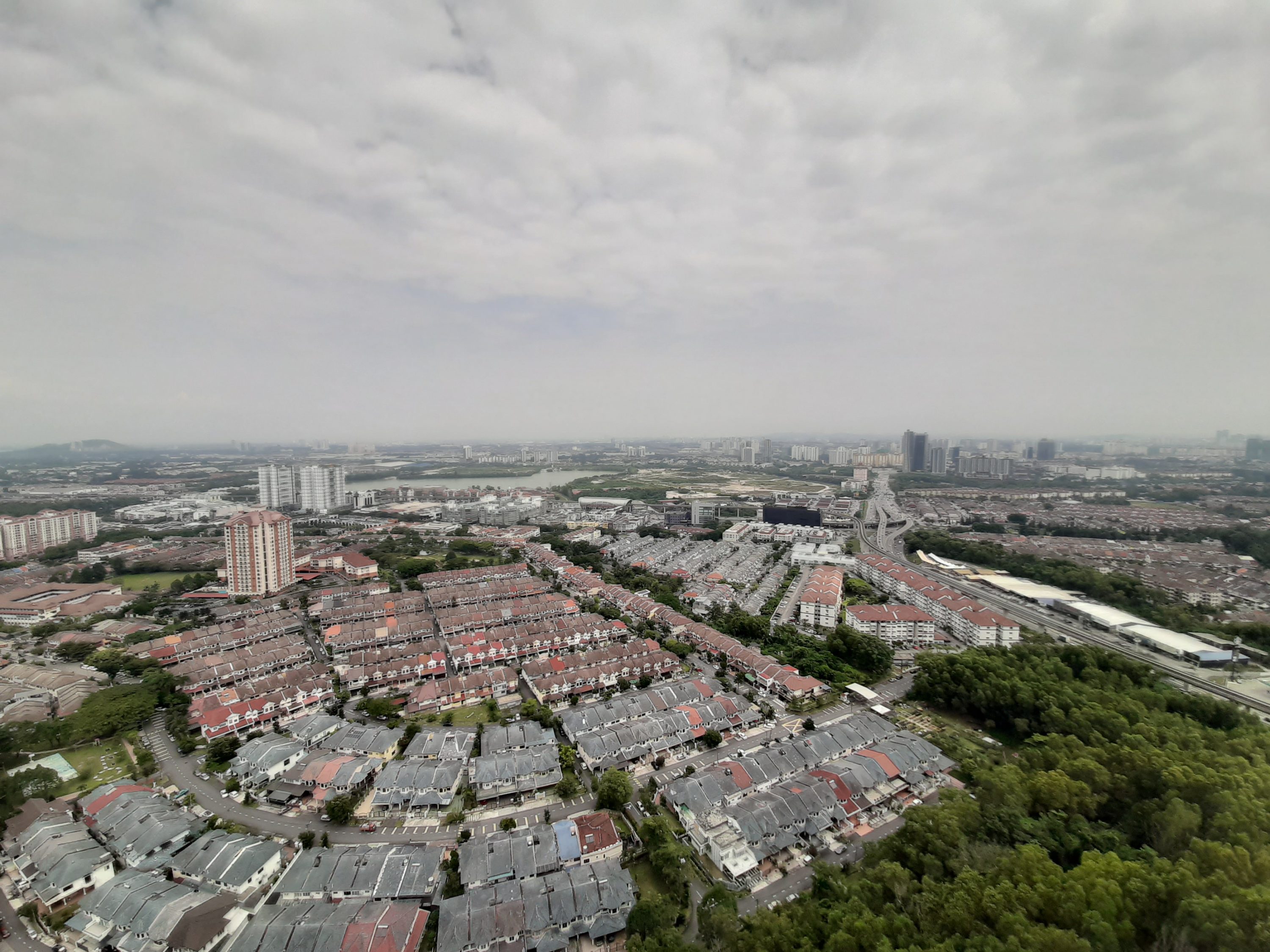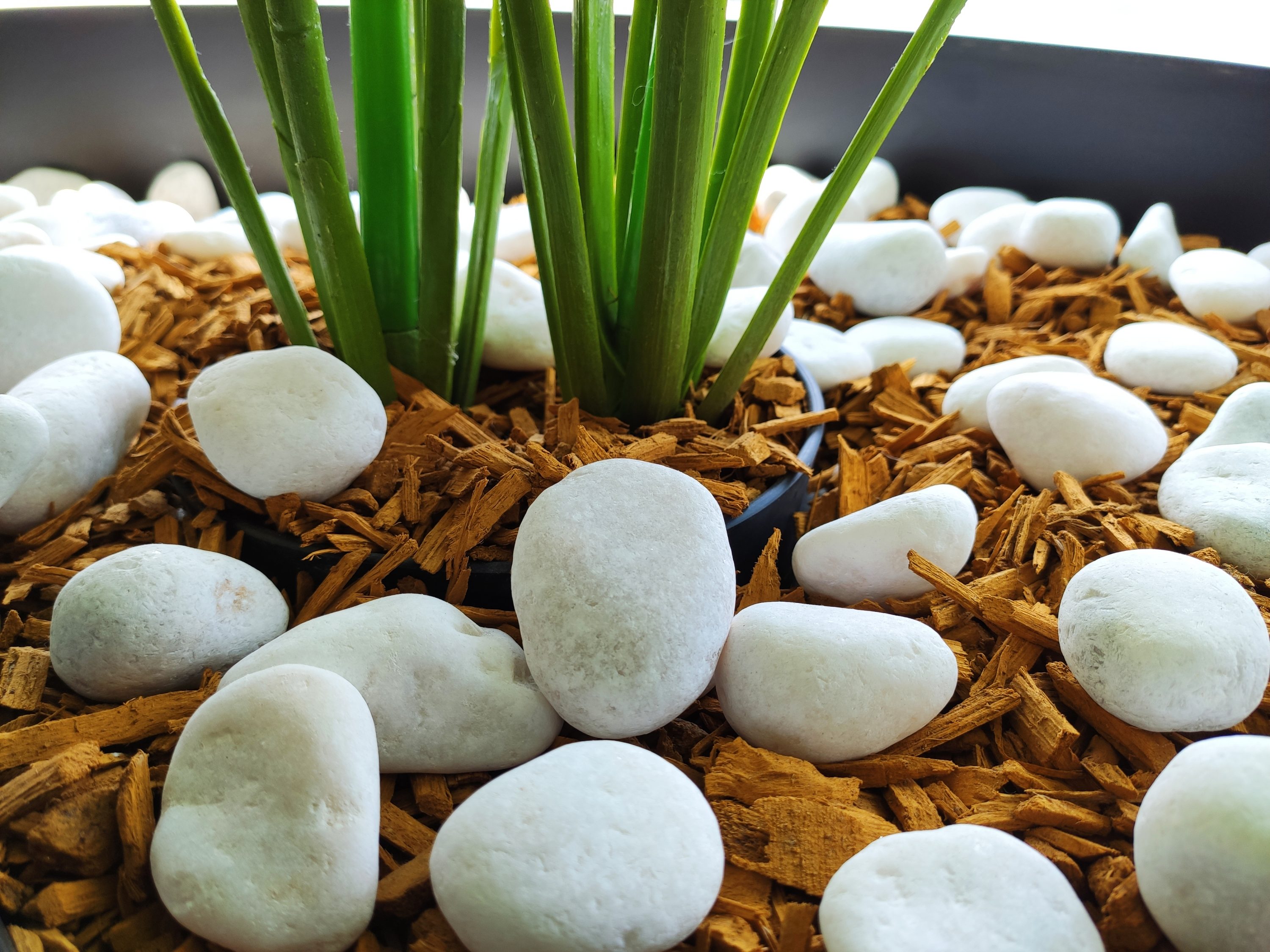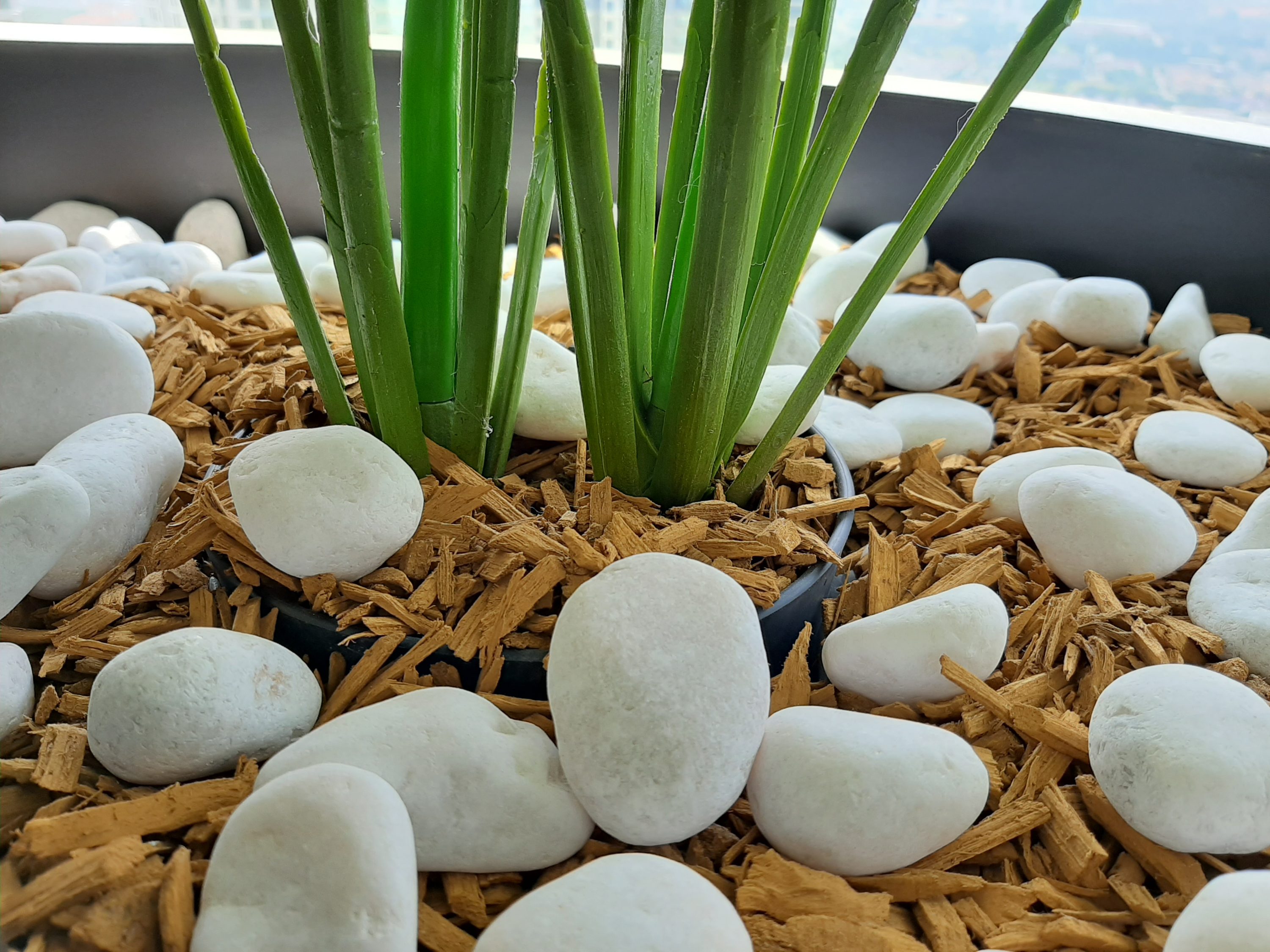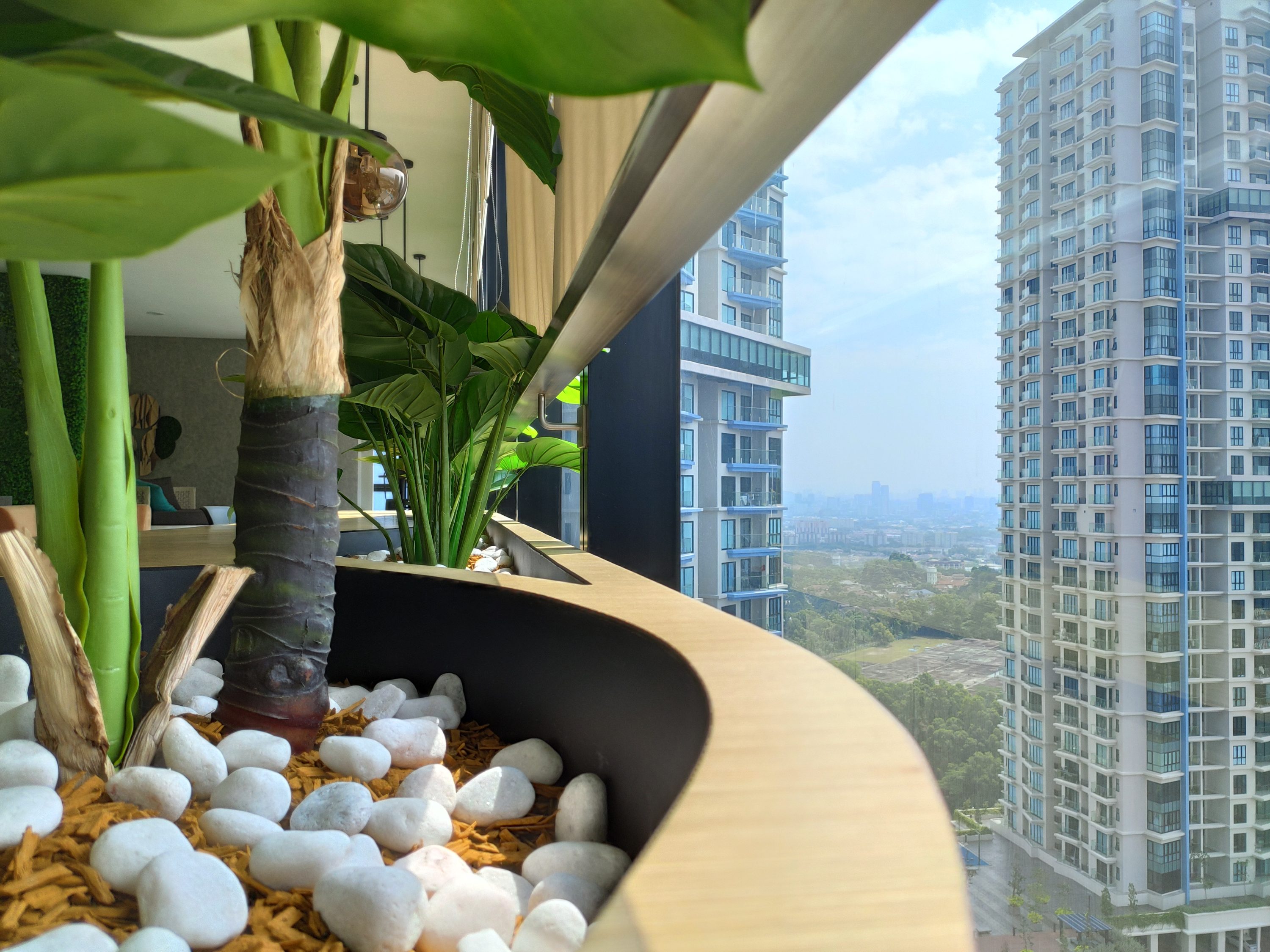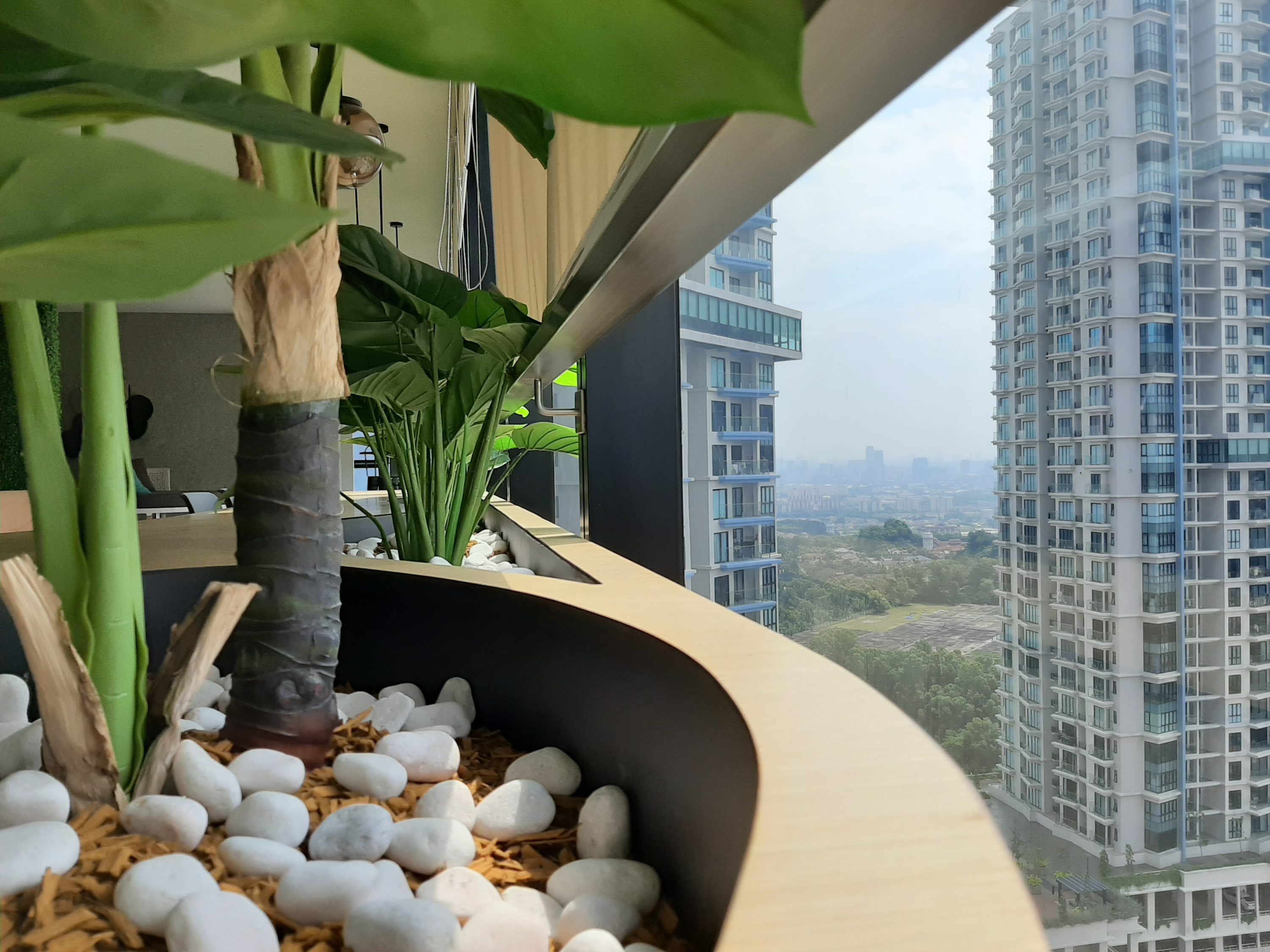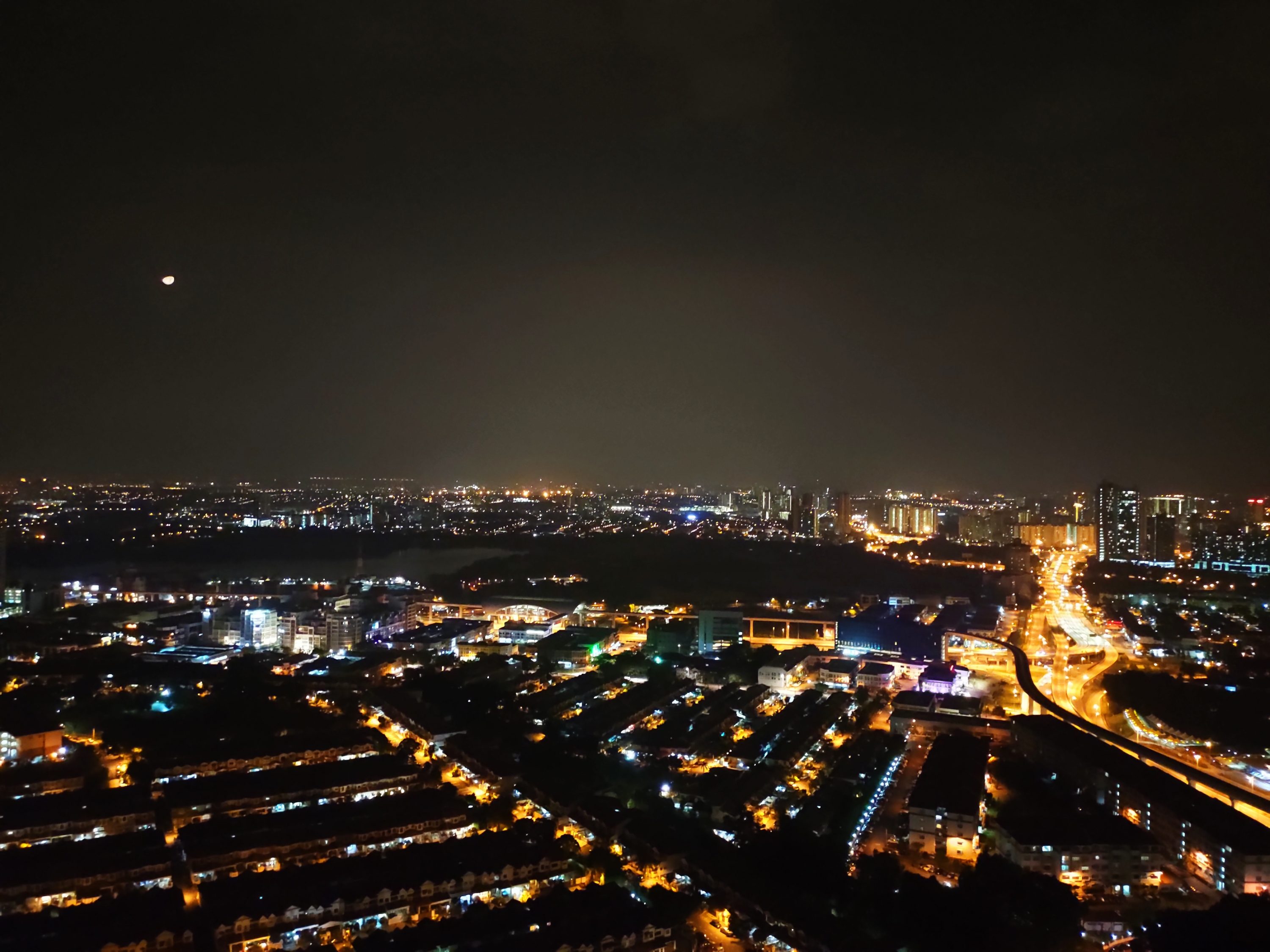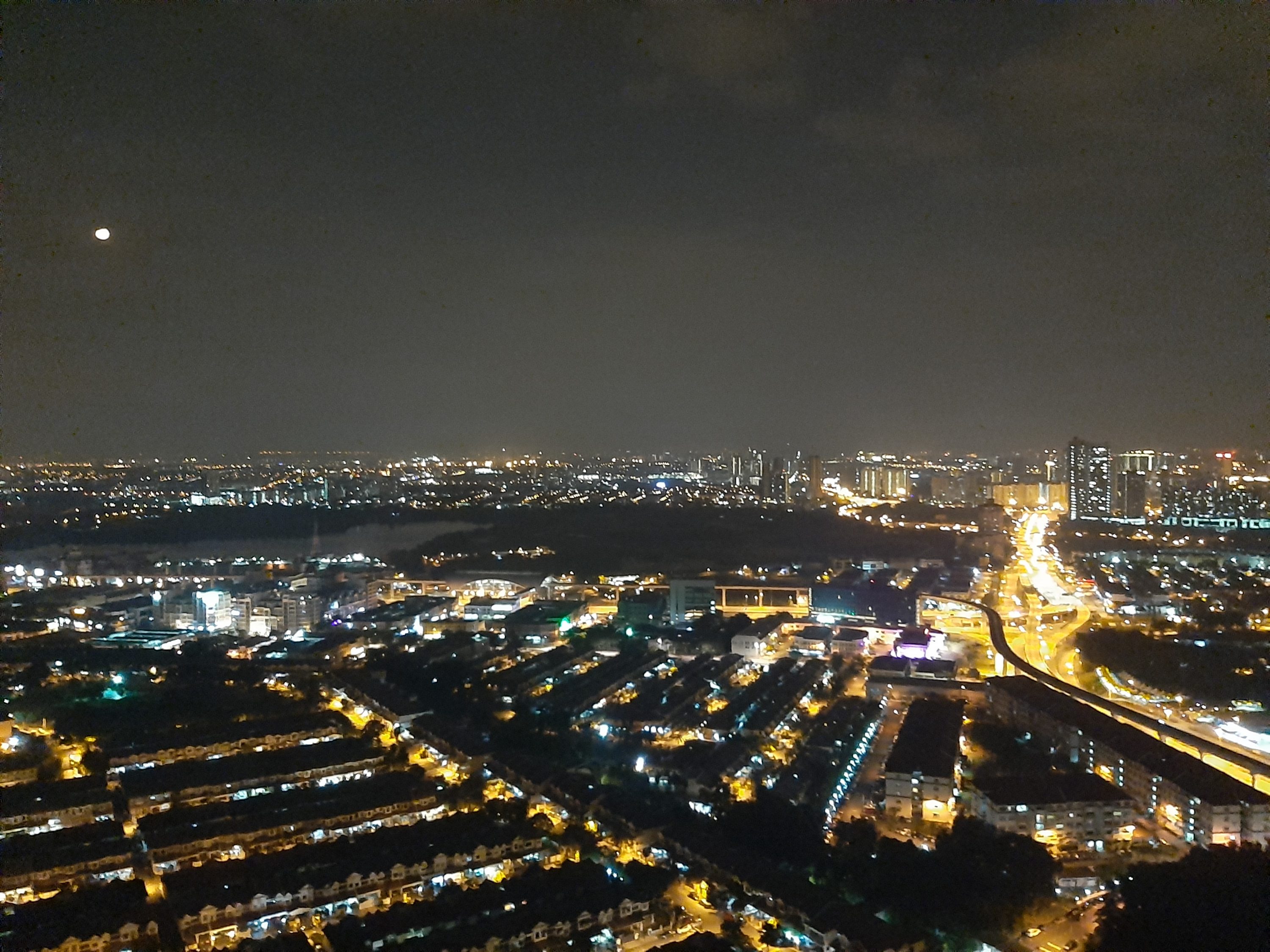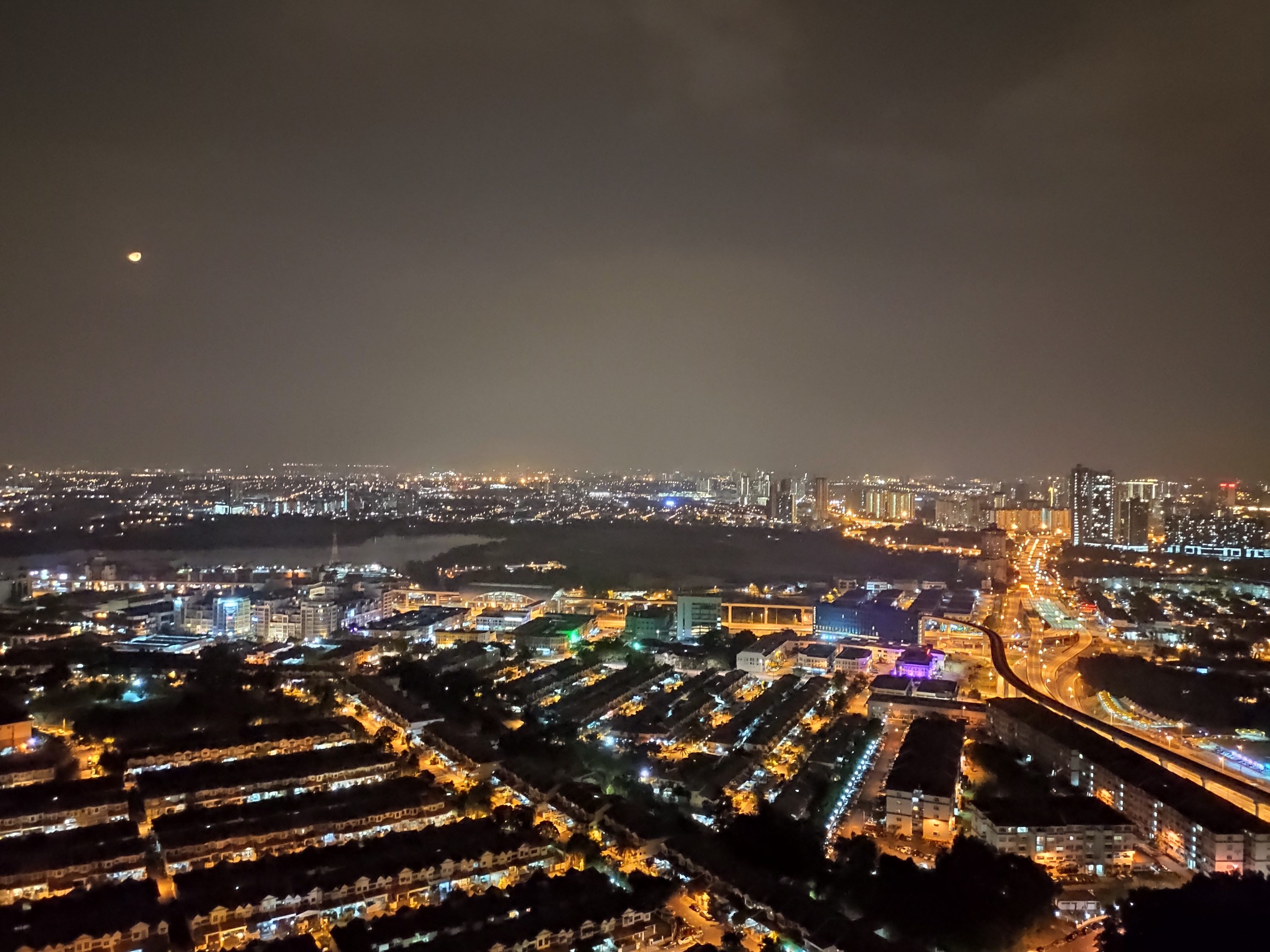I remember the first time I saw the Samsung Galaxy A50. It was a fascinating device because it looked like Samsung were finally making an affordable phone that you’d actually want to buy. But that initial impression was made when I first saw it on the noisy show floor of the Samsung Booth in MWC19.
Now, I actually have the phone in my hands, and a quick minute to use it alongside my current daily driver–and reigning king of its price point–the Xiaomi Mi 9T. It’s a trial by fire for the baby Galaxy A, so let’s see how it stacks up against what is arguably the best smartphone in its class.
The head-to-head
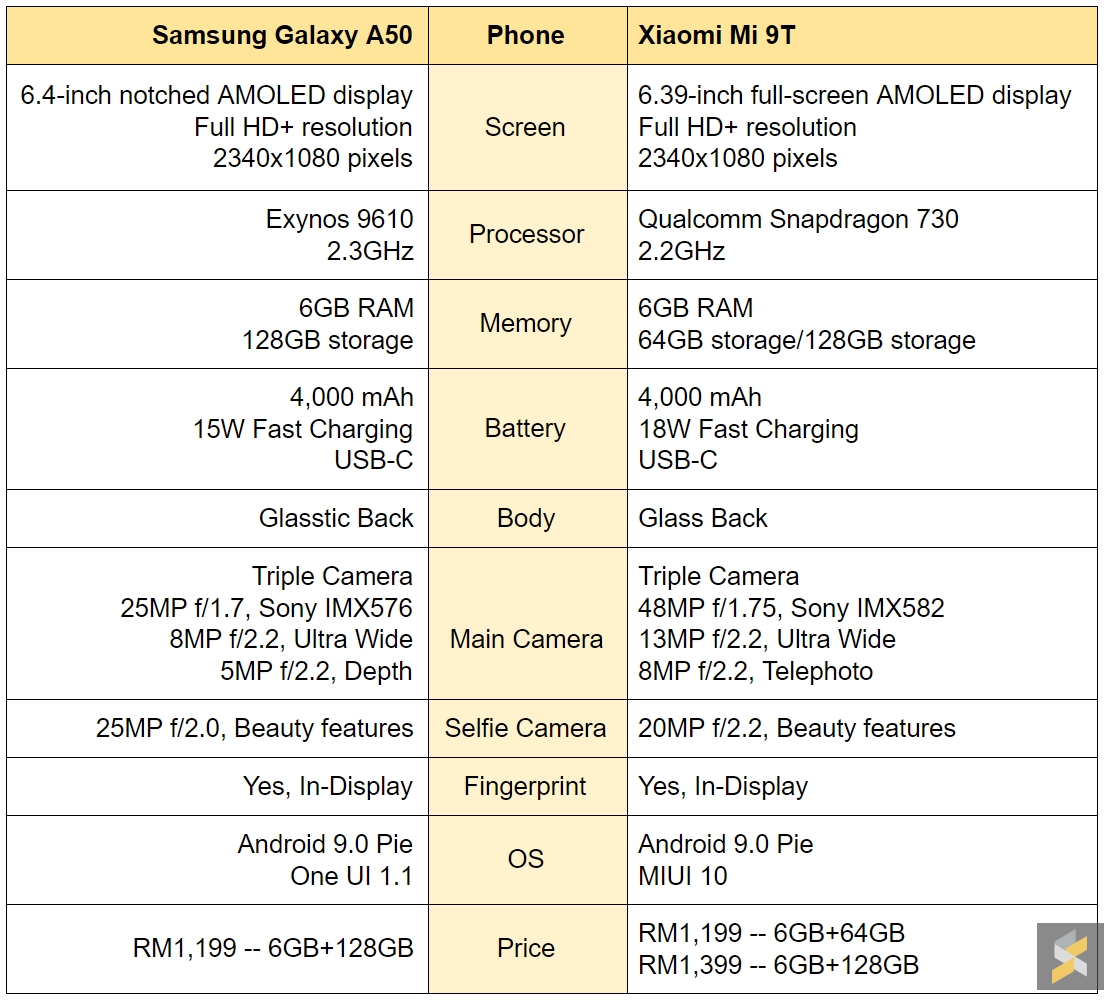
Let’s start this with a quick head-to-head spec-sheet comparison between our two smartphones. At a glance, it honestly doesn’t look like these phones differ a whole lot. Both have similarly sized AMOLED displays that push Full HD+ resolutions which look pretty good–featuring solid viewing angles for an AMOLED, with only a slight colour shift when viewed off-axis.
Perhaps the biggest difference between the two screens is the fact that the Galaxy A50 has a notch while the Mi 9T utilises a full-screen display. The Mi 9T also has what looks like a slightly smaller chin, but both phones do offer pretty immersive viewing experiences in their own right. Still, I have to give the Mi 9T the edge here.
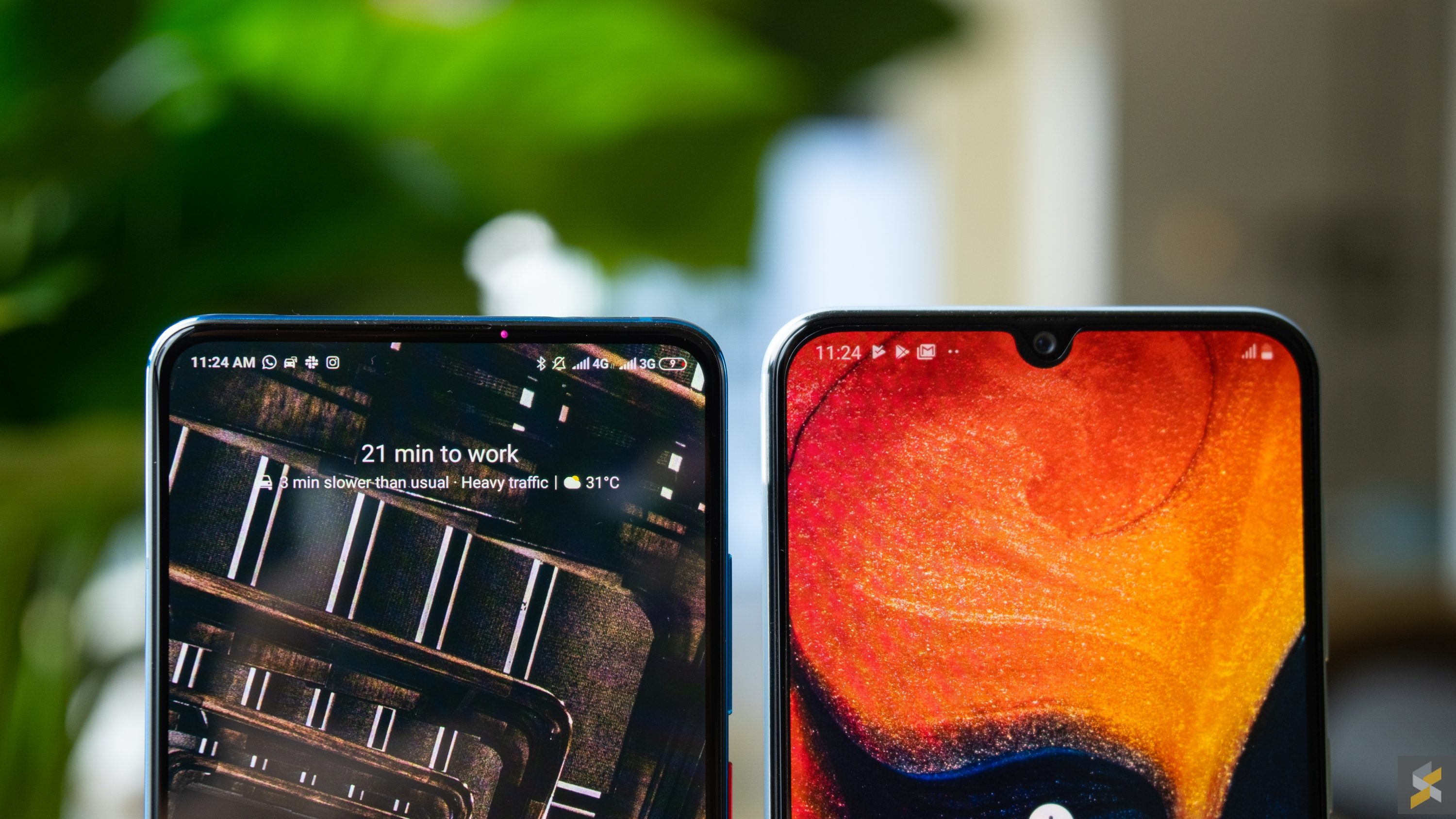
Besides that, the similarities continue when you look at the memory configurations, as both feature 6GB of RAM, but the Galaxy A50 has a better base memory configuration of 128GB compared to the Mi 9T’s 64GB base model. Additionally, the A50 features dual SIM support plus a dedicated SD card slot for memory expansion. While the Mi 9T also supports dual SIM connectivity, the smartphone doesn’t support any form of memory expansion at all–which is quite disappointing if you’re a power user.
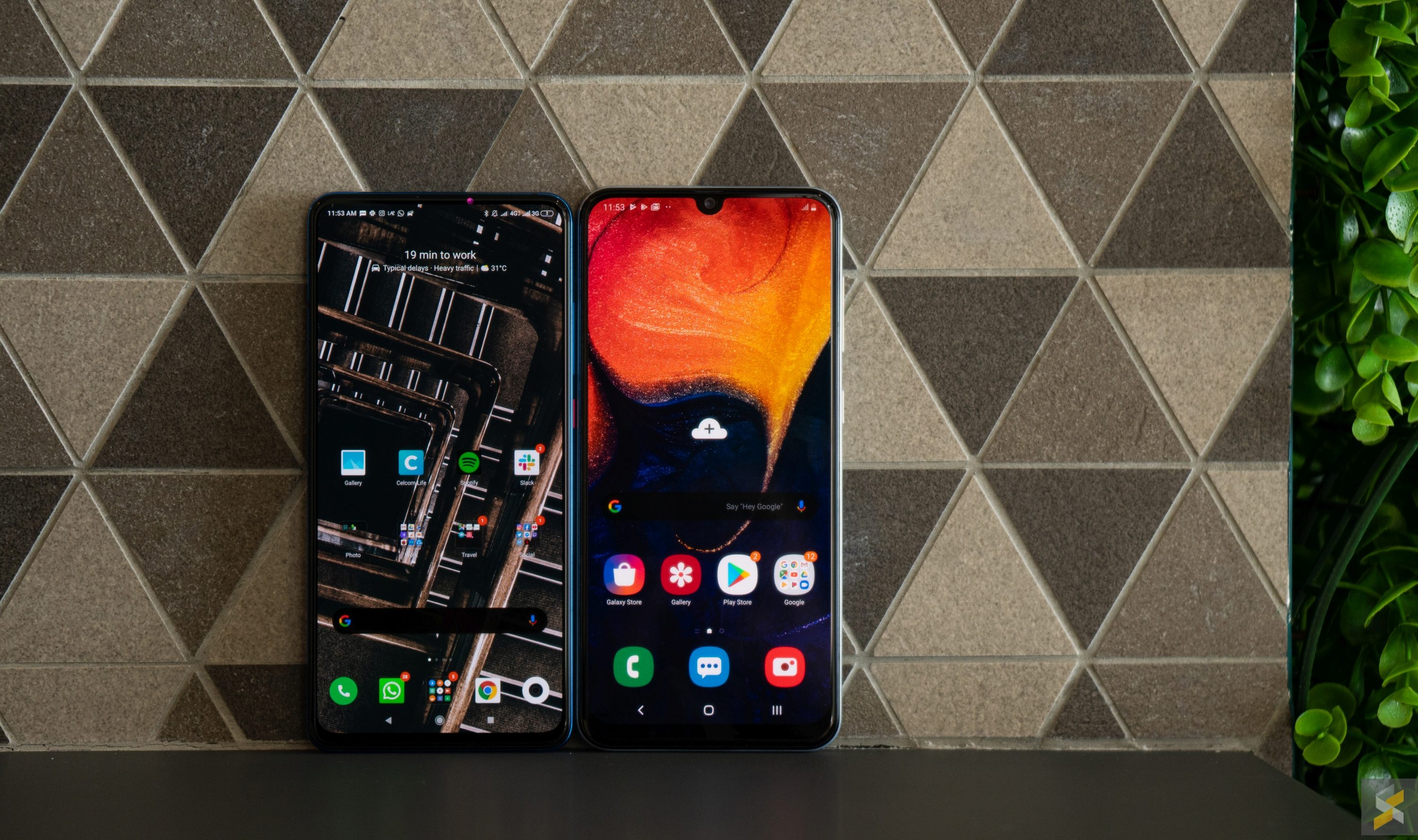
Both smartphones also feature large 4,000 mAh batteries with support for Fast-Charging via USB Type-C. That said, the Mi 9T comes with a faster 18W charger out of the box compared to the A50’s 15W charger. While I have yet to use the Galaxy A50 as my daily driver just yet, I’m getting about six hours of screen-on time on my Mi 9T with over a day on a single charge of its battery. Considering the fact that the Galaxy A50 also has a 4,000 mAh battery, I don’t suspect that it will differ that greatly–unless Samsung messes up their optimisation super badly–so you can expect pretty solid battery life too.
However, I think the biggest difference between the two phones has to be in their processor. While the Galaxy A50 packs a mid-range Exynos 9610 SoC, the Mi 9T has Qualcomm’s Snapdragon 730 chip at its heart, and when it comes to benchmark performance, the Mi 9T blows the Galaxy A50 out of the water.
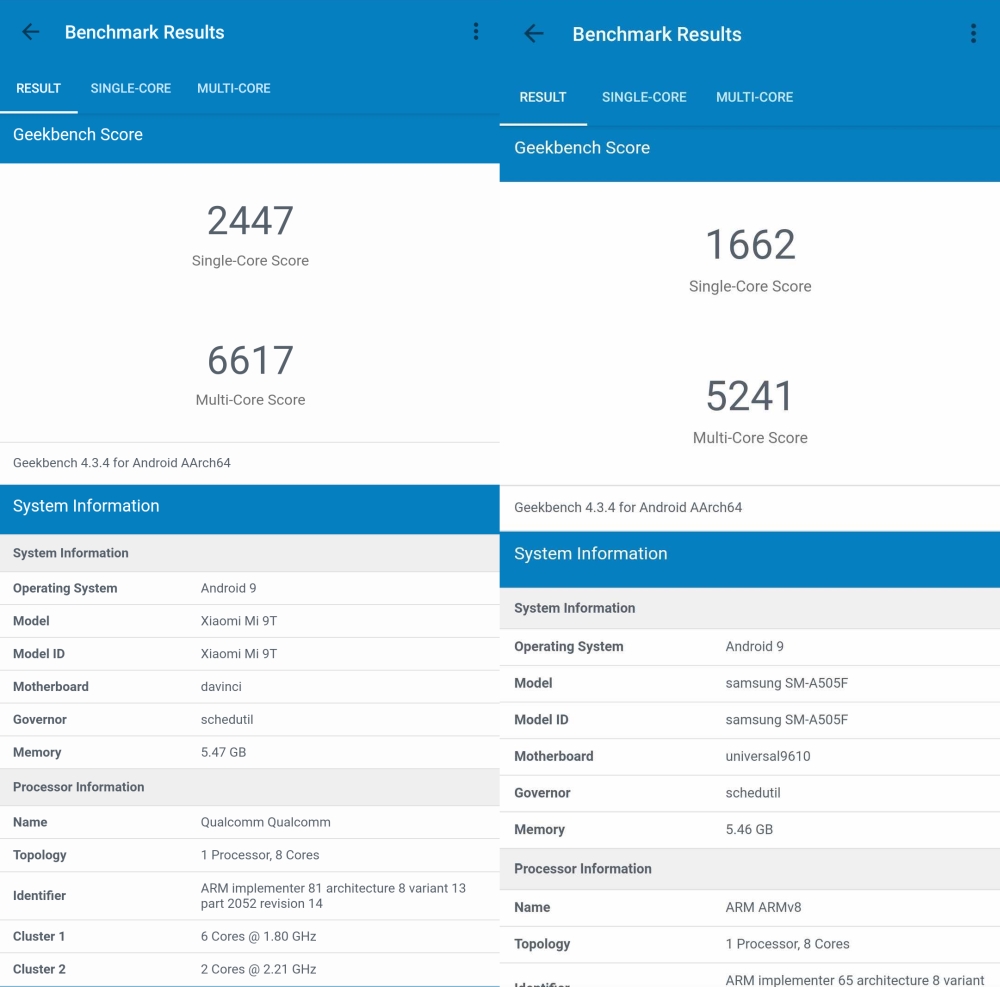
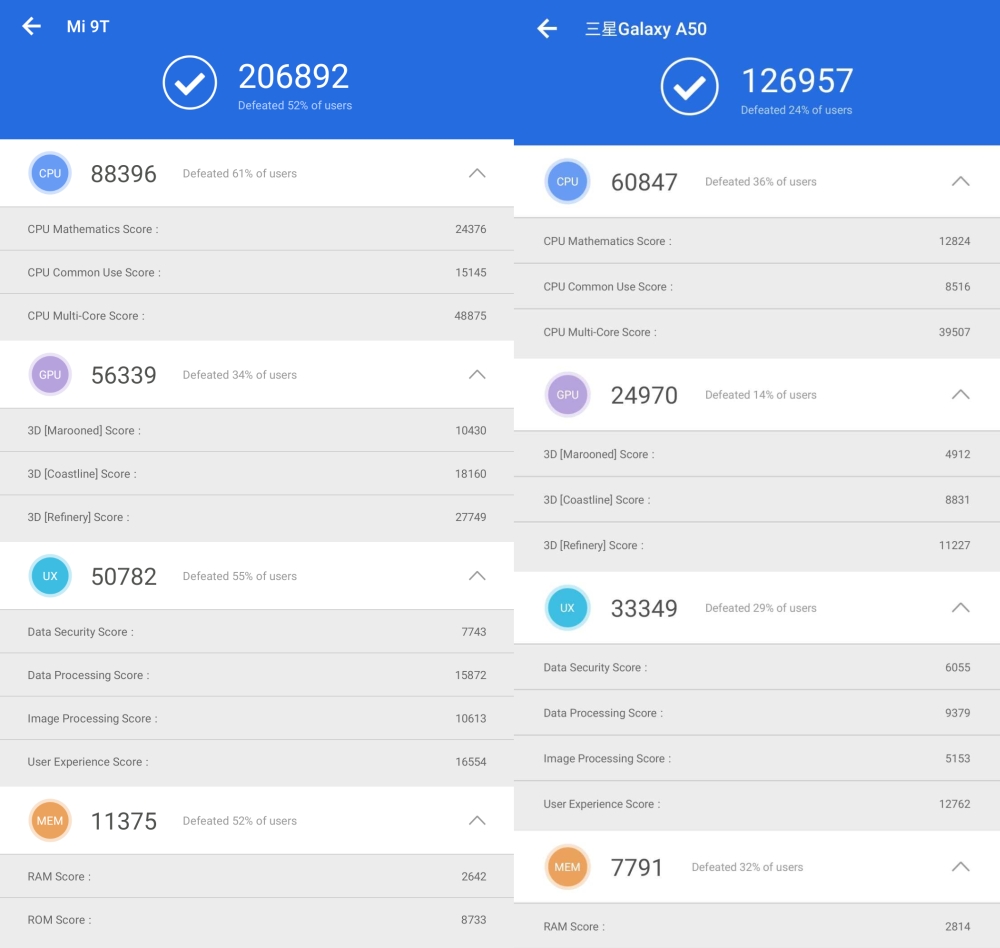
This is also true in my gaming test. Running on High Quality in Asphalt 9, the Mi 9T was able to maintain a smooth FPS throughout my gaming session, no matter how many particles were exploding on screen. The Galaxy A50, on the other hand, struggled whenever there was more than two cars on screen, and when I raced on a map with lots of particles, the FPS was not something I would call playable.
Another huge difference comes in the speakers. Yes, both are using mono bottom-firing speakers, so you shouldn’t expect excellent stereo separation or any fancy audiophile crap like that. When it’s a mono setup, what you’re looking for is volume, and when it comes to that, the Mi 9T once again blows the Galaxy A50 out of the water. But, the blow is softened here because both devices do feature 3.5mm headphone jacks so you can easily upgrade your audio experience.
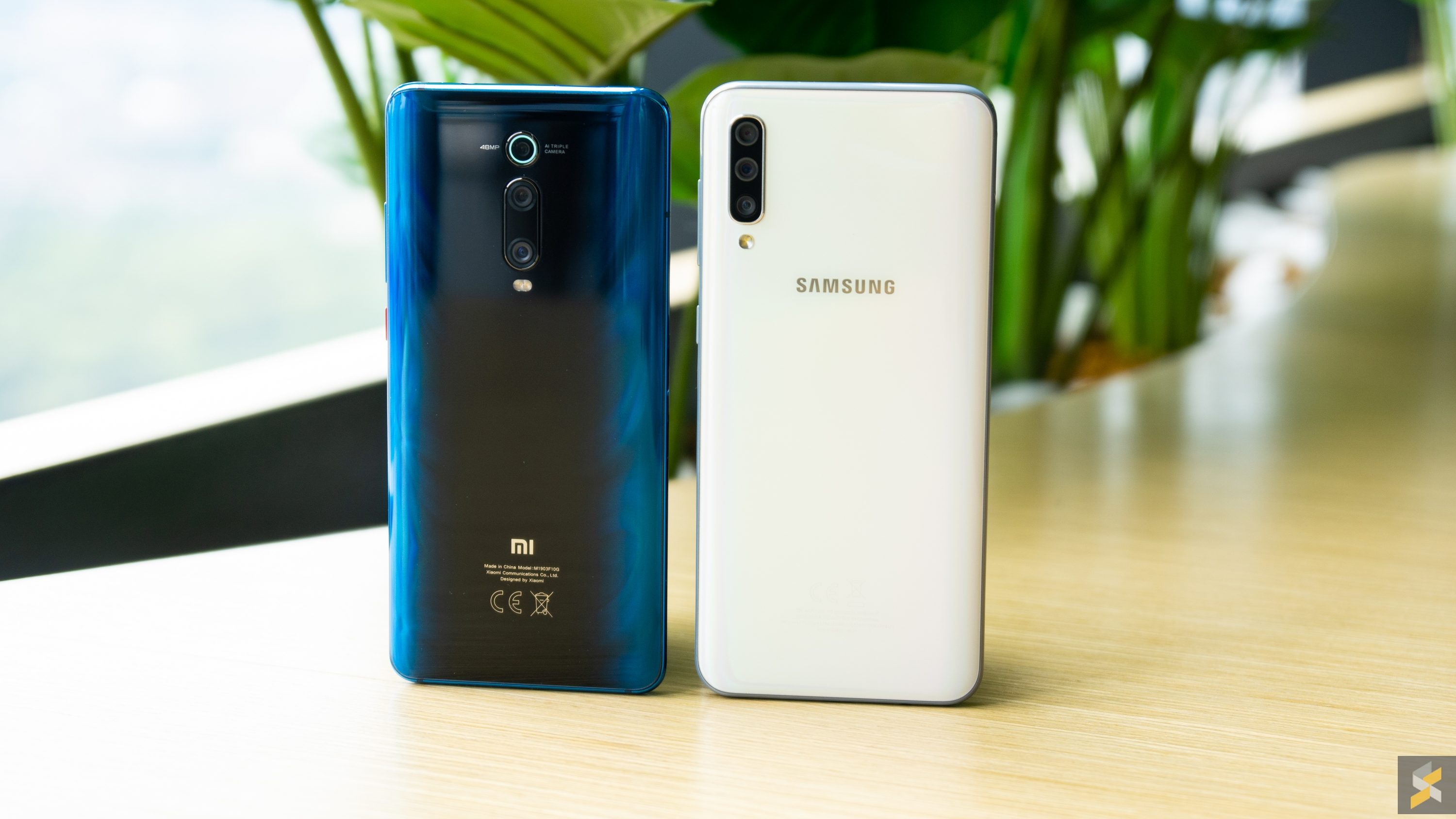
The Build
I’ll be frank and tell you that both of these phones feel pretty solid in the hand. They don’t feel like poorly built devices, but then again I don’t test my phones like JerryRigEverything does, so I can only tell you how durable they feel in your typical daily usage situations.
That being said, the phones–as far as I can tell–are made from different materials, most notably is the fact that the Galaxy A50’s back is made out of something called glasstic which sounds to me like a way to make plastic sound more premium. I honestly couldn’t care less what it was made from as long as they hold up well to scratches. And, from what I can tell, the Galaxy A50 seems to have aged as well as the Mi 9T I’ve been using as a daily driver.
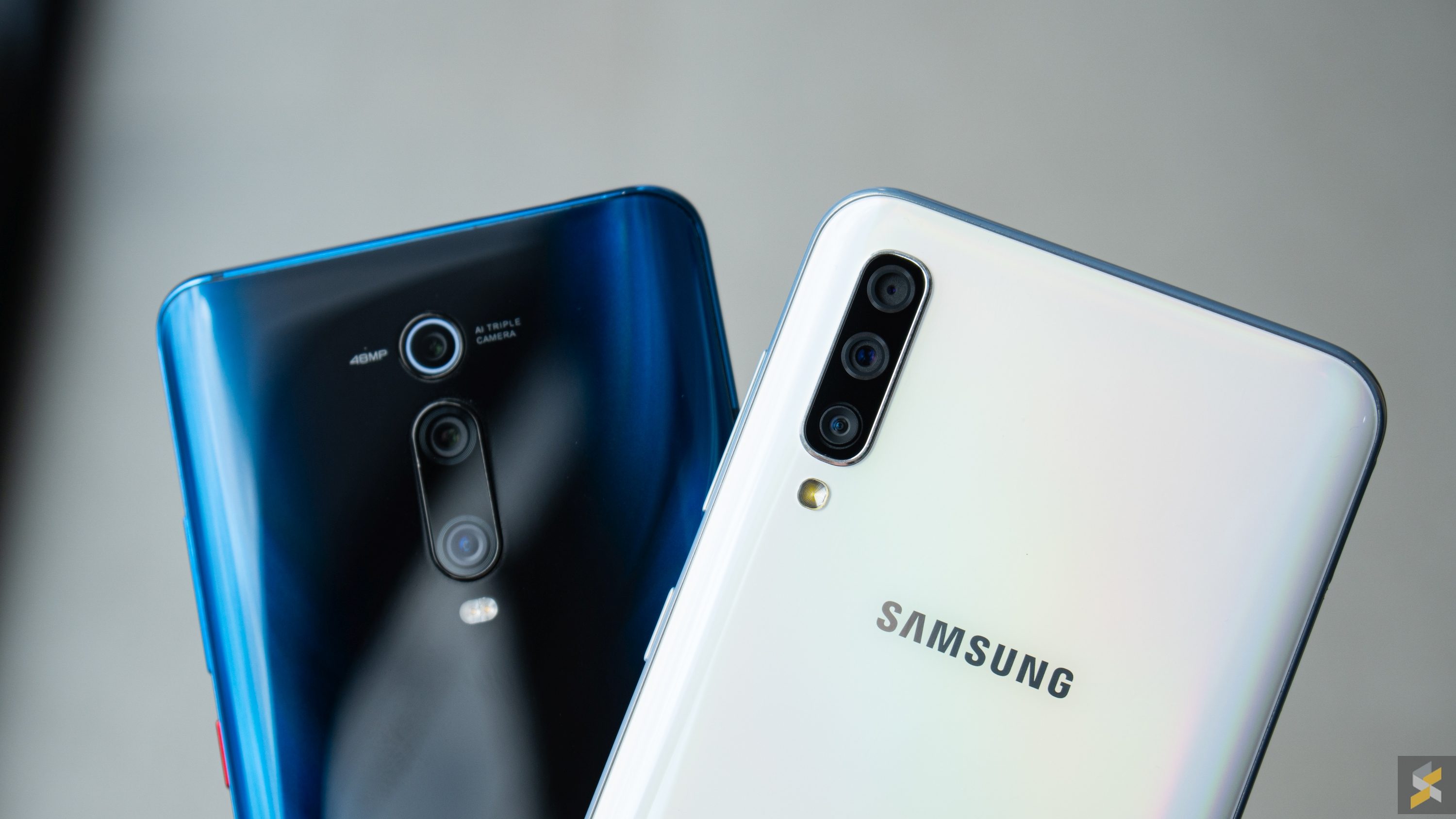
It’s worth noting that the Galaxy A50 I have here isn’t a brand new unit. My guess is that it was some demo or review unit that has been passed around a couple of times already, so the back has seen some wear as it’s littered with micro scratches the same way my Mi 9T is. There aren’t any deep scratches or anything bad like that, which is very promising for a device that’s been around the block.
One interesting thing that I noticed was just how light the Galaxy A50 is compared to the Mi 9T. It’s surprising because both smartphones feature large 4,000 mAh batteries with similar screen sizes. Logic would dictate that these phones should weigh roughly the same weight, but the Galaxy A50 is almost comically light compared to the Mi 9T. Of course, this could be the result of the kind of materials each company uses, but that’s not something I can confirm myself.
Personally, I prefer the heft of the Mi 9T as well as its thicker edge compared to the Galaxy A50, but this will likely change based on the individual. The Galaxy A50 feels a lot like a less premium Mi 9, to be honest.
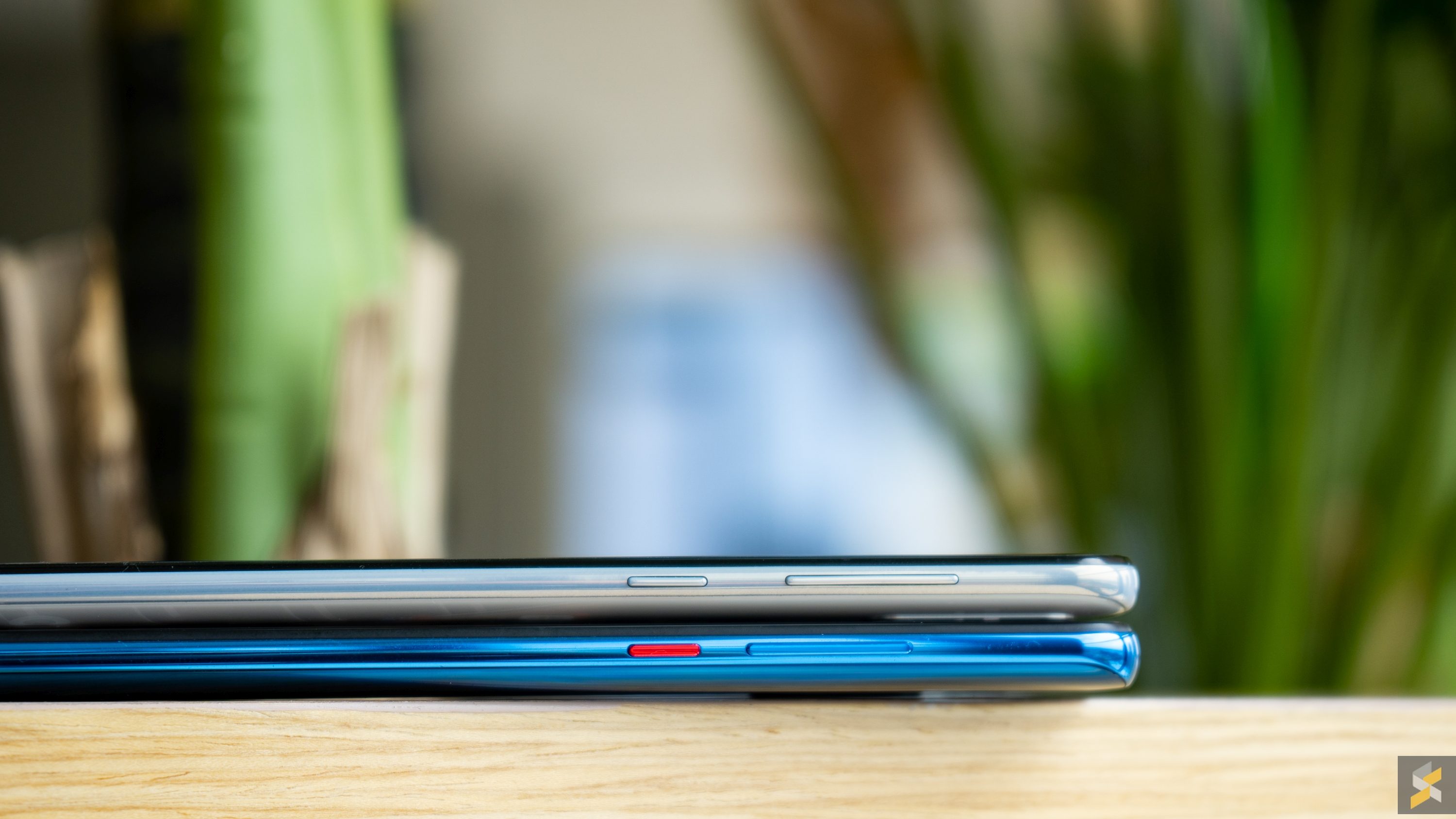
Then, there’s how these phones deviate when it comes to design. The Mi 9T goes all out with the whole flame effect back design, rainbow ring around the camera and coloured power button, while the Galaxy A50 takes a far more muted approach with my particular unit opting for a clean white look that’s reminiscent of the Galaxy S10’s trippy white colourway thanks to the way the light reflects off the back. It’s hard to capture these design flourishes on camera, but I think its pretty obvious which one is more in your face with their design.
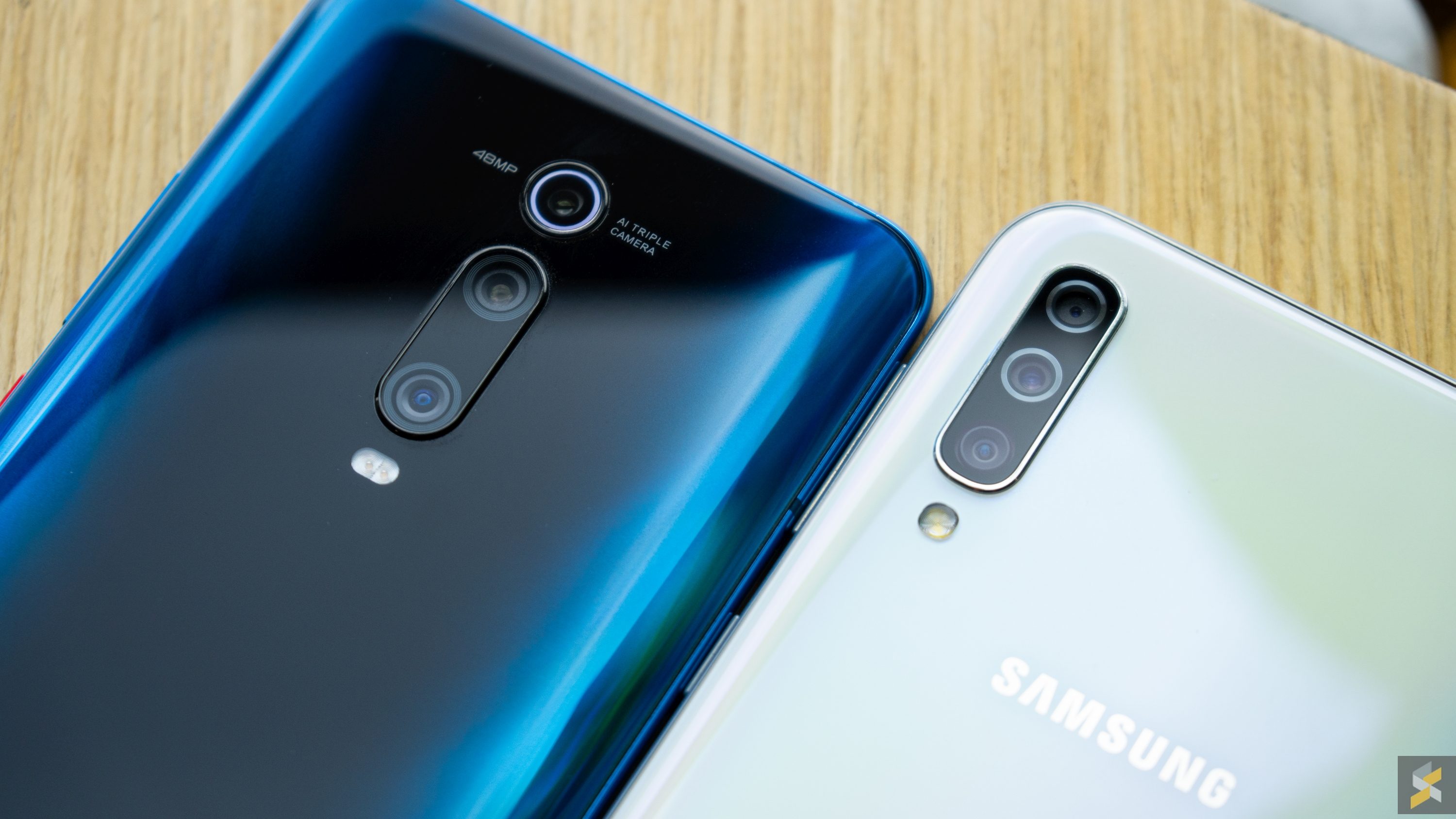
The Cameras
On paper, there’s no arguing that the Mi 9T has the upper hand in this department. Yes, both smartphones have a triple camera setup, but the Mi 9T has three different focal lengths, while the Galaxy A50 only has two focal lengths plus a depth sensor. I was expecting the Mi 9T to utterly crush the Galaxy A50, but honestly, the results aren’t that far apart, especially in daylight with Scene Optimiser and AI Scene Detection turned on.
The Mi 9T’s AI optimisation is a little more aggressive, but I think even if you like the slightly more natural look of the Galaxy A50, it’s hard to pick it as the winner of this test. As a whole, I definitely prefer the Mi 9T’s photos, and this preference extends to the low-light test as well.
The Mi 9T retains a lot more colour saturation and has much better noise control in both the Night Mode and regular mode tests. When we switch the ultra-wide, neither phone can access Night Mode, so they’re both kind of bad.
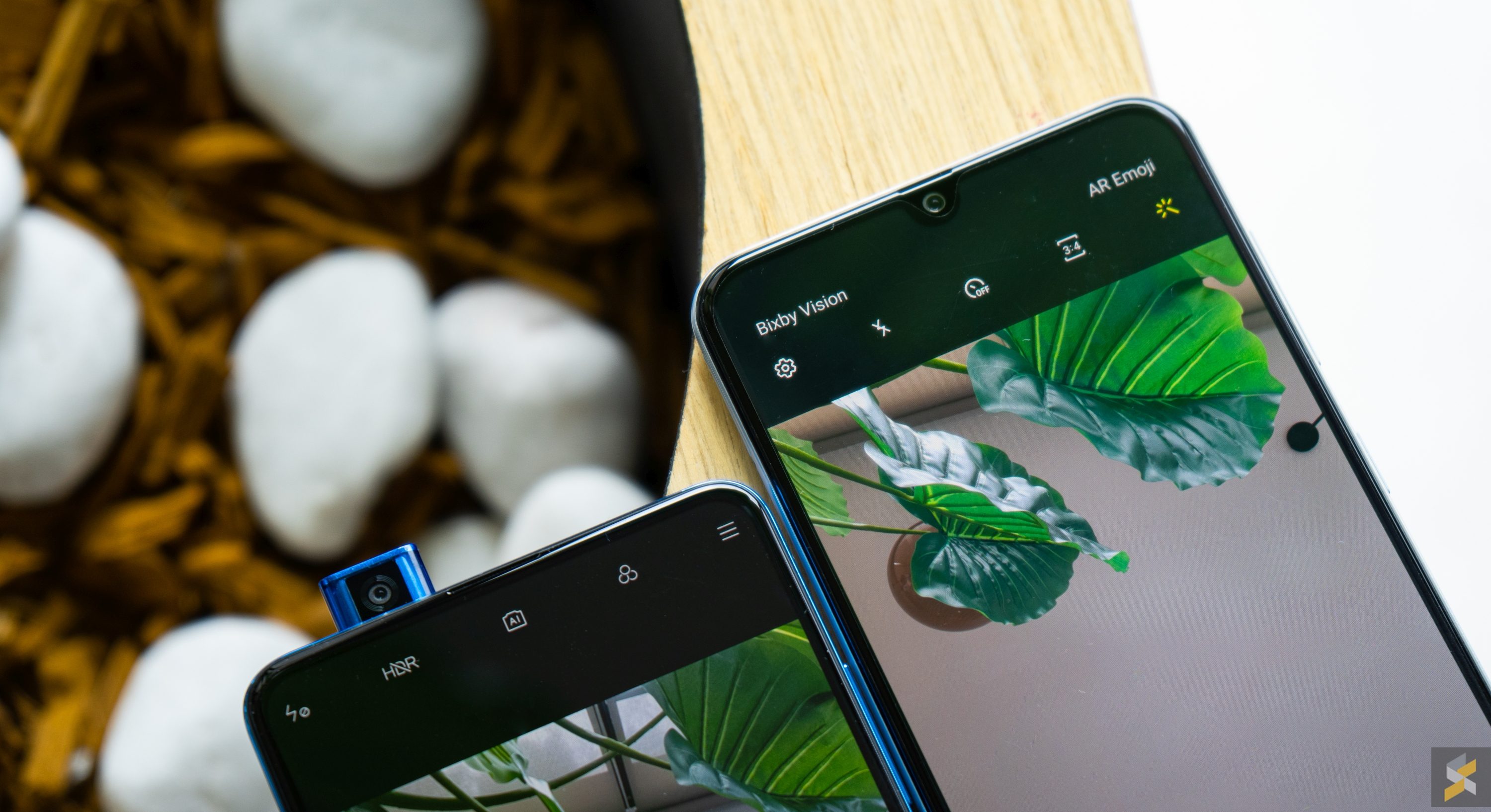
Besides the rear camera, I also tested the selfie shooters on both phones. The Galaxy A50 has its 25MP camera embedded in the tiny waterdrop notch at the top of its display while the Mi 9T tucks its 20MP shooter away in a motorised camera module that retracts into the top of the smartphone.
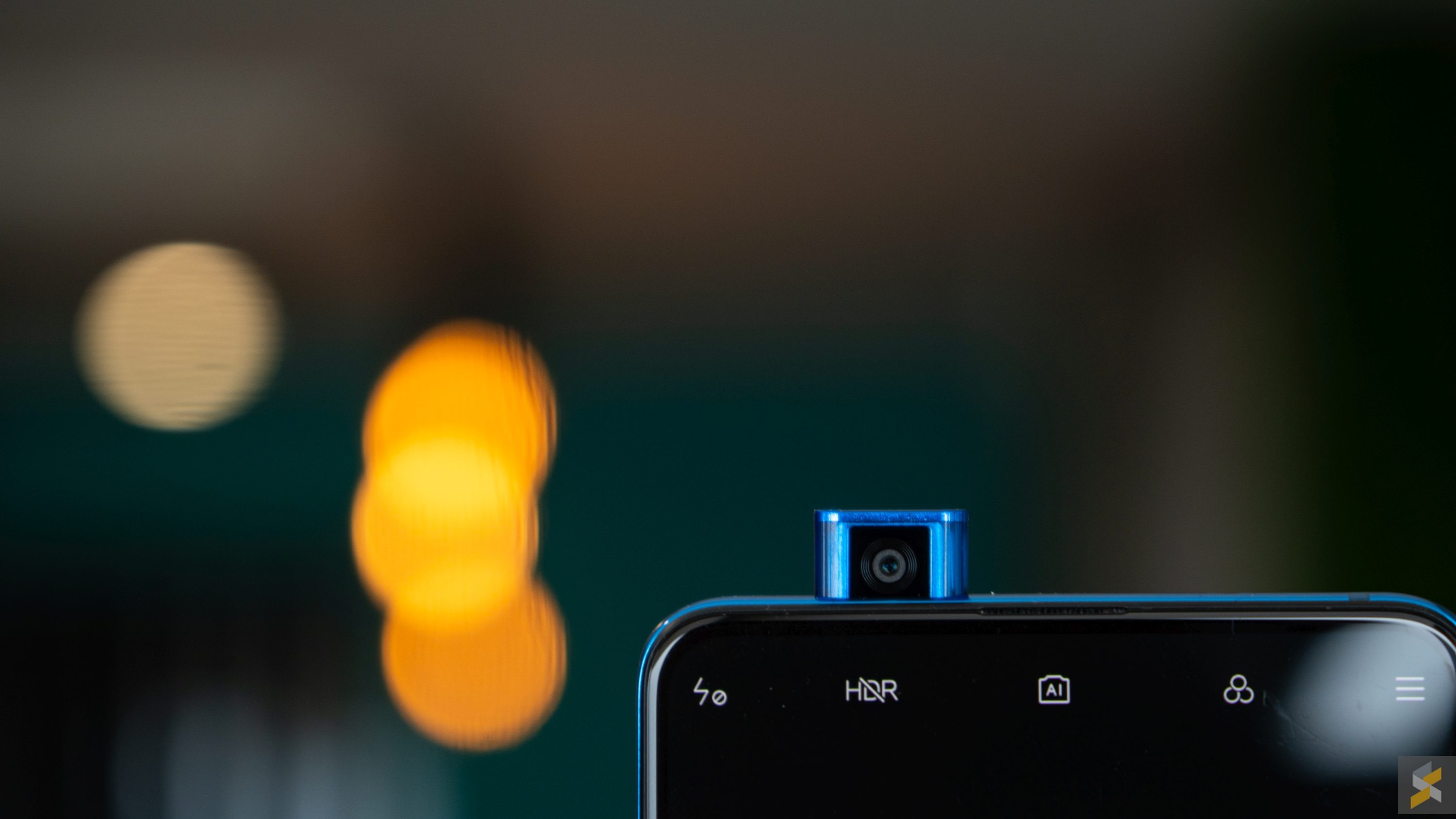
While the motorised selfie module looks cool and allows for a full-screen display, the Mi 9T takes a really long time to deploy its camera. The motors themselves raise the camera fairly quickly. but there’s just a huge delay between tapping the flip camera button to the motors actually kicking into action. I’m not quite sure why that is, but I hope it’s something they can fix in a future software update.
In any case, let’s look at the selfies. I took two photos, one with portrait mode turned on, one without.
While I had beauty mode turned off for all the photos, I couldn’t find a way to turn off beauty–or whatever skin smoothening thing the Galaxy A50 was doing–on the Samsung’s Live Focus selfie. But, I have to say, the images are pretty comparable and I’m surprised that the Galaxy A50 did so well with edge detection. That said, I think the Mi 9T still has the better portrait mode simply because it’s more accurate especially around my shoulder.
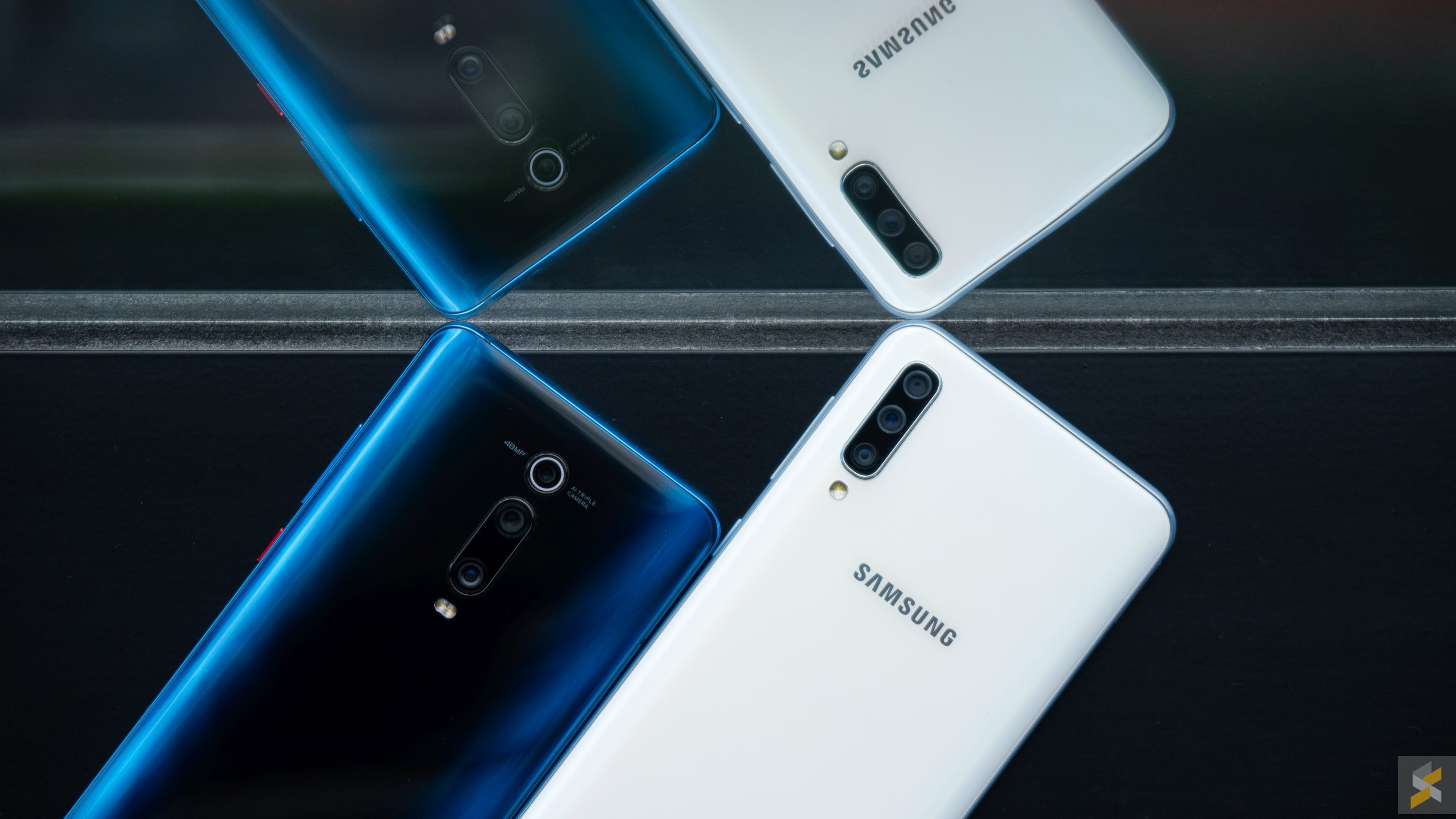
The Verdict
The fact that it wasn’t an utter spanking by the Mi 9T means that buying a mid-range Samsung phone can’t be classified as a waste of money anymore.
Going up against what is arguably the best smartphone in its class right now, was never going to be an easy task, and Xiaomi’s Mi 9T proves why. For my money, the Mi 9T outperforms the Galaxy A50 in every one of the major tests I’ve conducted so far, but I guess this was to be expected since the Mi 9T is definitely the newer smartphone. Plus, it’s from a company that’s legendary in its ability to provide bang-for-buck handsets.
However, I will commend Samsung because they definitely did a solid job with the Galaxy A50. The fact that it wasn’t an utter spanking by the Mi 9T–the A50 held its own in battery, display, memory configuration and expandability, build, and selfie quality–means that buying a mid-range Samsung phone can’t be classified as a waste of money anymore. Plus, I prefer Samsung’s One UI over MIUI because of its clean look and better homescreen icon scaling. I mean, MIUI, seriously, after all these years you still only let me put four icons in a row? C’mon.
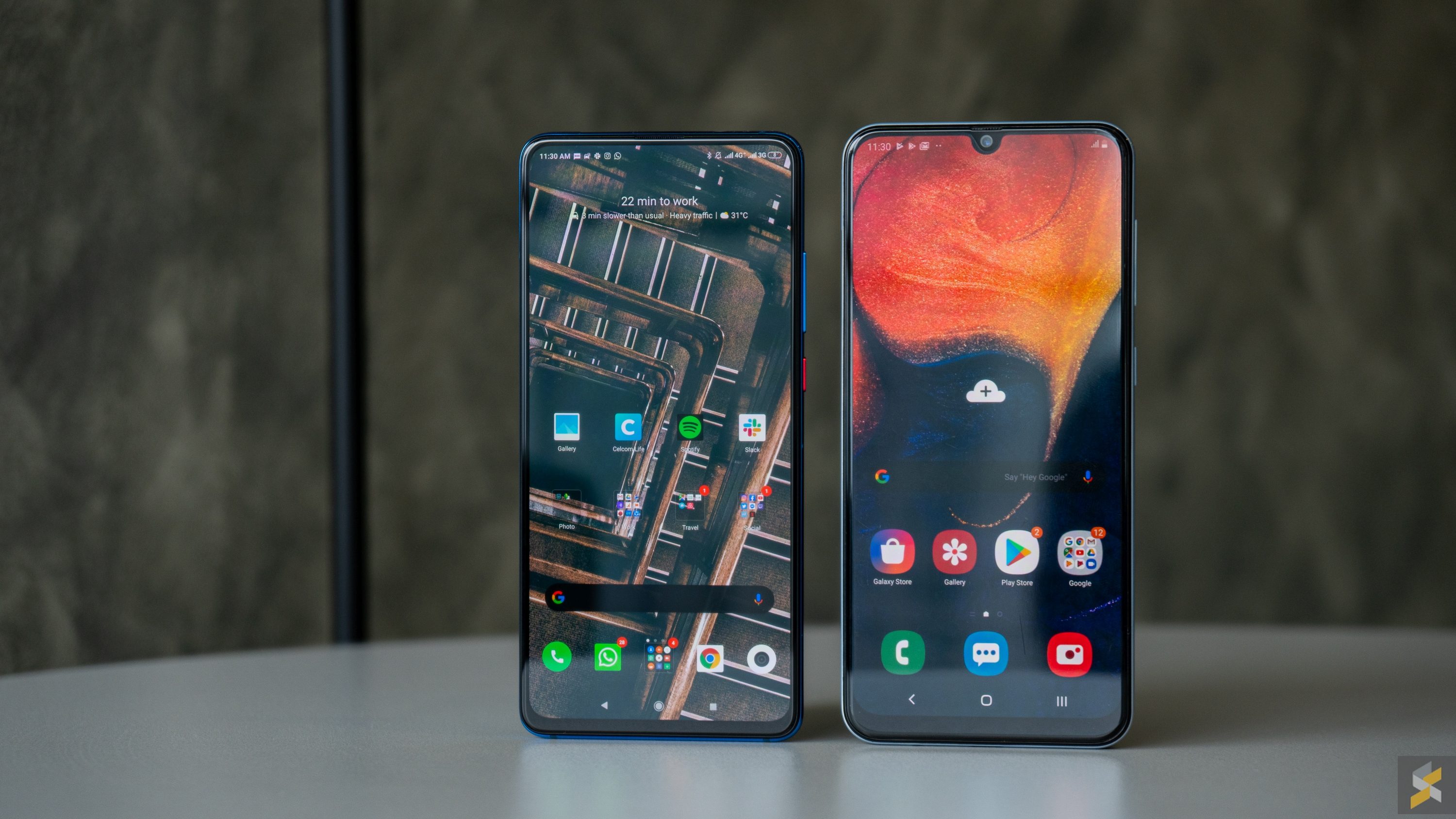
Then, there’s the fact that even though both handsets have RRPs of RM1,199, you will often find the Galaxy A50 for under RM1,000. Xiaomi’s Mi 9T, on the other hand, is hot commodity right now so you’ll likely have to pay full price.
That being said, for the purpose of this comparison, I have to pick a winner and my winner is the Xiaomi Mi 9T. Not only does it edge the Galaxy A50 out in many of these tests, but the performance gap between the Snapdragon 730 and the Exynos 9610 is just too big to give up.
Photography by Rory Lee on the Sony A6400.

